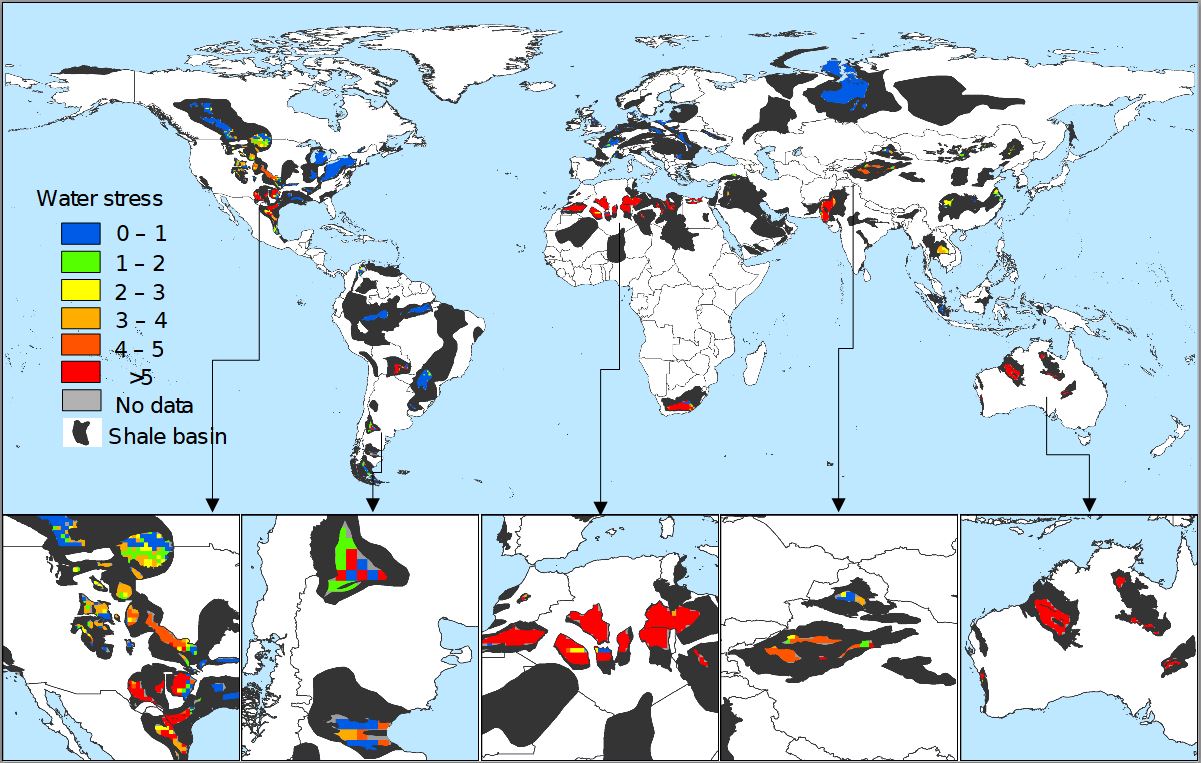8 June 2018
New study examines impacts of fracking on water supplies worldwide
Posted by larryohanlon
By Larry O’Hanlon
Using hydraulic fracturing to extract oil and natural gas from shale is a common technique used worldwide. Because the technique requires large amounts of water, however, it raises the question of whether it could lead to water shortages or competition with other water uses, especially agriculture.
In a new paper in the AGU journal Earth’s Future, Lorenzo Rosa and his colleagues evaluated the impacts of hydraulic fracturing on local availability for food production and other human and environmental needs globally.
They found that 30 percent of shale deposits are located in arid regions where aquifers are already being heavily tapped for irrigating crops and 31 percent to 40 percent of shale deposits are in areas where water-stress would emerge or be exacerbated by fracking.
The researchers conclude that in such places water management plans would be needed to ensure that fracking would not affect other human and environmental water needs.
The map below shows water stress within shale deposits. In water stressed areas, water is consumed at greater rates than the local water supply is replenished. Green, yellow, orange or red pixels represent areas where there are shale deposits and where freshwater is already being used at unsustainable rates. Areas with water stress indexes greater than one are where water consumption for human activities is unsustainable.
Larry O’Hanlon is a freelance science writer. He also manages AGU blogs.











 GeoSpace is a blog on Earth and space science, managed by AGU’s Public Information staff. The blog features posts by AGU writers and guest contributors on all sorts of relevant science topics, but with a focus on new research and geo and space sciences-related stories that are currently in the news.
GeoSpace is a blog on Earth and space science, managed by AGU’s Public Information staff. The blog features posts by AGU writers and guest contributors on all sorts of relevant science topics, but with a focus on new research and geo and space sciences-related stories that are currently in the news.
It is unfortunate that good drinking water is being used in fracking mining. I suppose that to use ocean salt water would be to costly to get to the sites. Also, how would that affect the aquifers it would filter into. Is fracking the better way to mine in the area or can it be accomplished another way without environmental repercussions as water fracking results in.